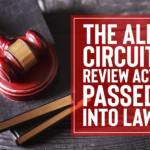When it was first passed by Congress in 1863, the federal government was seeking a way to deter and punish unscrupulous profiteers who were providing substandard supplies to the Union Army. With the federal government’s energies and resources committed fully to the war effort, the False Claims Act empowered the citizenry to assist the government in ferreting out those who, in the words of President Lincoln, “feast and fatten on the misfortunes of the nation while patriotic blood is crimsoning the plains of the South.” As passed in 1863, the Act permitted a successful whistleblower to collect 50% of the money recovered by the government.
The Act remained virtually unchanged until 1943. At that time, a number of False Claims Act suits were filed by individuals who literally copied their civil fraud allegations from federal criminal indictments. The people filing the suits had no independent knowledge of the wrongdoing. After the U.S. Supreme Court ruled that such “parasitic” or “copycat” suits were not barred by the False Claims Act, Congress amended the Act in two significant ways. First, Congress enacted a “government knowledge bar” which prevented whistleblowers from filing suit if the suit was based on information that was already known to the government. Second, Congress reduced the whistleblower’s share of the recovered proceeds from 50% to between 10% and 25%
The “government knowledge bar” proved to be an insurmountable hurdle for most qui tam plaintiffs to overcome. As a result, the 1943 amendments virtually destroyed the ability of a private citizen to successfully bring a False Claims Act case. As a result, the Act fell into disuse.
“The False Claims Act was amended during the Reagan Administration, reinvigorating the public-private partnership envisioned when the Act was first signed into law by President Lincoln.”
In the 1980’s, at a time when the Reagan administration was pushing for greater privatization of government functions and advocating a significant military buildup, public attention focused on a series of highly-publicized frauds involving defense industry contractors. Interested in demonstrating a commitment to combating defense fraud, Congress passed and President Ronald Reagan signed a bill amending the False Claims Act in 1986, reinvigorating the public-private partnership envisioned by the Act.
The 1986 amendments greatly revitalized the Act, making it the government’s primary tool in the war against fraud on the federal government. Congress changed the law in the following significant ways:
- Removed the “government knowledge bar,” which had effectively prevented citizens from bringing False Claims Act cases whenever the government had information about a fraud.
- Guaranteed a successful plaintiff between 15% and 30% of the amount recovered by the government, as well as reasonable expenses and attorneys’ fees.
- Added a special section providing legal protections and remedies for whistleblowers who are harassed, threatened, discharged or otherwise discriminated against in their employment because of their whistleblowing.
- Increased penalties for defrauding the U.S. Treasury to three times the amount of actual damages plus up to $10,000 per false claim submitted to the government.
- Increased the plaintiff’s participation in the suits that the government joins.
- Eliminated the need to prove specific intent by allowing a false claim when a defendant acts in “deliberate ignorance” or “reckless disregard” of the truth.
- Reduced the applicable standard of proof by restoring the normal “preponderance of the evidence” standard applicable in all other civil cases.
The Act was again amended in 2009 and 2010. In 2009, the Fraud Enforcement and Recovery Act (FERA) was signed into law, enacting the most significant amendments to the FCA since the 1986 amendments and resolving many issues that had been addressed inconsistently by the courts. The changes included:
- Expanded the scope of liability by eliminating the “presentment” requirement (effectively overruling the Supreme Court’s opinion in Allison Engine Co. v. United States ex rel. Sanders, 128 S. Ct. 2123 (2008)).
- Expanded the definition of “claim” to include “any request or demand, whether under a contract or otherwise for money or property and whether or not the United States has title to the money or property” that is (1) presented directly to the United States, or (2) “to a contractor, grantee, or other recipient, if the money or property is to be spent or used on the Government’s behalf or to advance a Government program or interest” and the government provides or reimburses any portion of the requested funds.
- Defined what it means for falsity to be “material” as “having a natural tendency to influence, or be capable of influencing, the payment or receipt of money or property.”
- Expanded conspiracy liability for anyone violating the FCA.
- Amended the “reverse false claims” provision to expand liability to “knowingly and improperly avoid[ing] or decreas[ing] an obligation to pay or transmit money or property to the Government.”
- Increased protection for qui tam relators beyond employees, to include contractors and agents.
- Decided that the government’s complaint will procedurally relate back to the date of the qui tam relator’s filing.
- Provided that whenever a state or local government is named as a co-plaintiff in an action, the government or the relator “shall not [be] preclude[d] . . . from serving the complaint, any other pleadings, or the written disclosure of substantially all material evidence” on the other governmental entity.
- Increased the Attorney General’s power to delegate authority to conduct Civil Investigative Demands prior to intervening in an FCA action.
In 2010, Congress again amended the Act, this time as part of the Patient Protection and Affordable Care Act (“PPACA”). The amendments included:
- Strengthening the Act’s “public disclosure bar” to give the federal government final word on whether a court may dismiss a case based on a public disclosure.
- Strengthening the “original source” requirement that provides another avenue for a relator to overcome the “public disclosure bar” if the relator has “knowledge that is independent of and materially adds to the publicly disclosed allegations or transactions.”
The PPACA also made clear that a Medicare or Medicaid provider may be subjected to FCA liability for failing to return an overpayment within 60 days of discovery or the date a corresponding hospital report is due. The PPACA also amended the Anti-Kickback Statute (“AKS”), 42 U.S.C. 1320a-7b(b), to provide that claims submitted in violation of the AKS automatically constitute false claims for purposes of the FCA, bringing it in line with the treatment of violations of the Stark Law. The PPACA further clarified that “a person need not have actual knowledge . . . or specific intent to commit a violation” of the AKS.
Since the False Claims Act was amended in 1986, it has proven wildly successful at combating fraud and returning money to the U.S. Treasury. To see just how successful the Act has been, check out our FCA Facts & Figures. To learn about the nuts and bolts of how the Act is applied in practice, visit How it Works.



